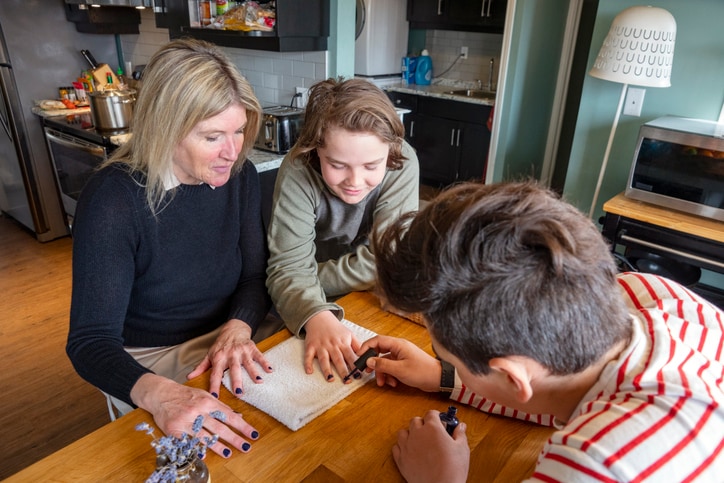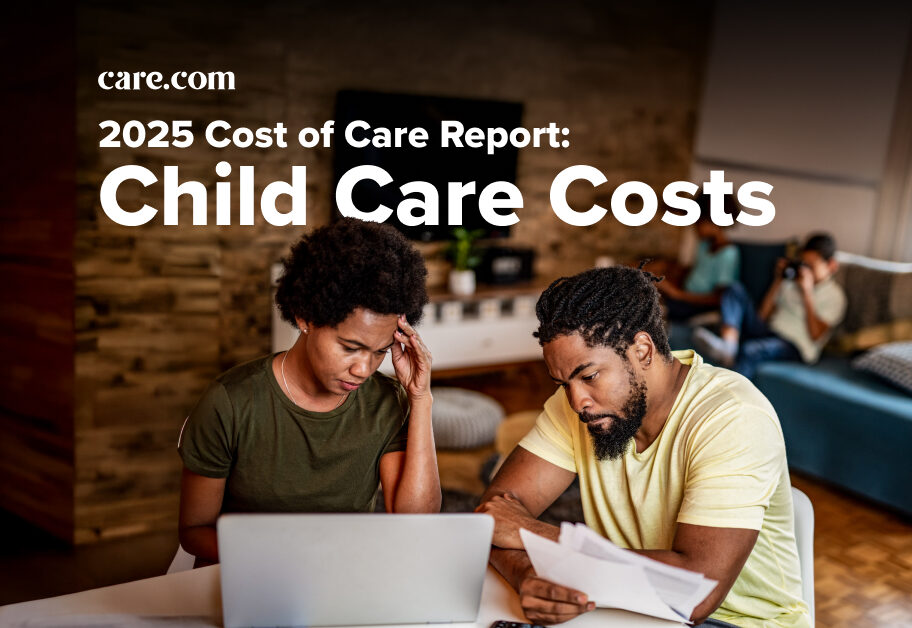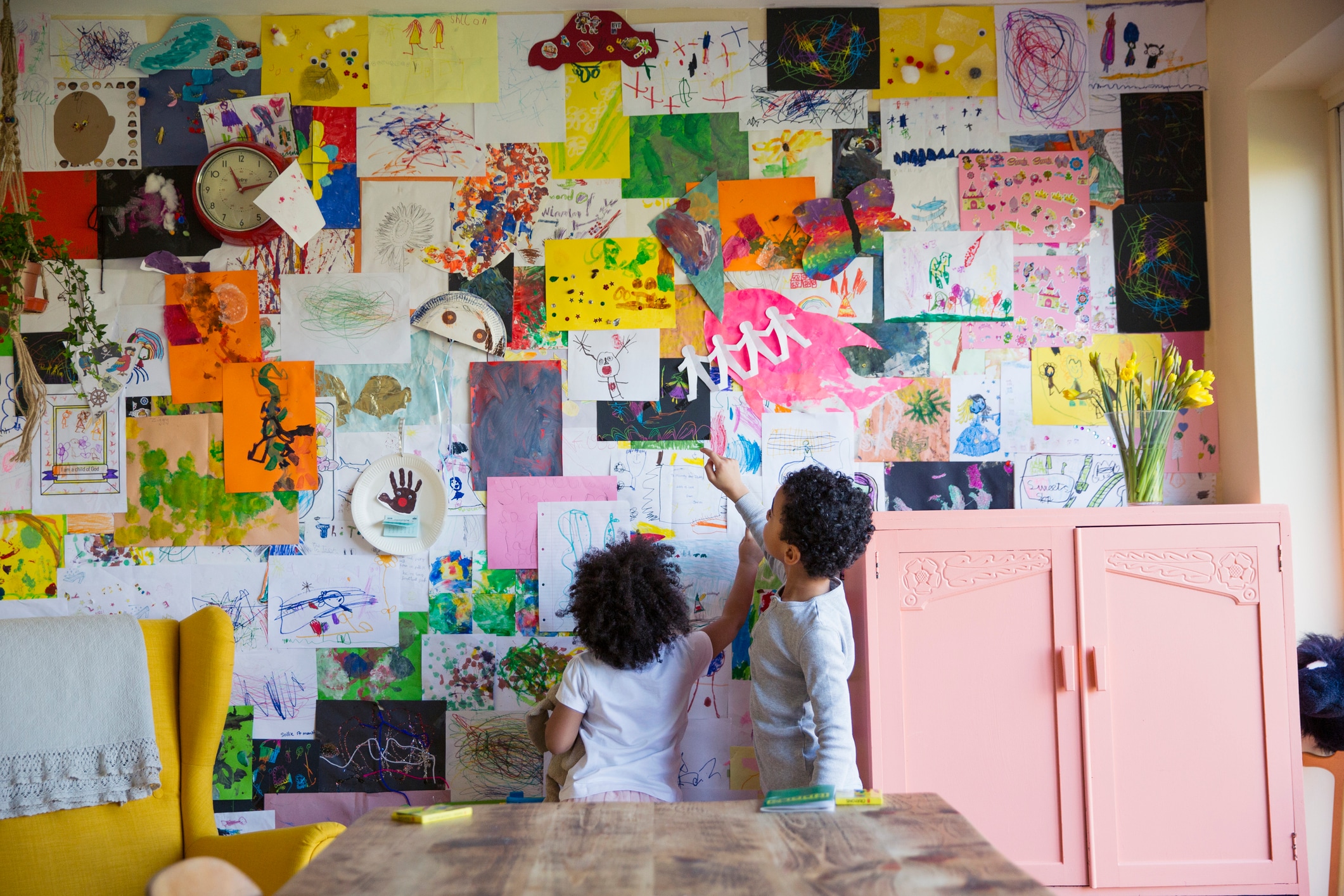For past generations, it wasn’t common for kids to talk about gender identity with their parents. Now, thanks to inclusive Pride events, amazing LGBTQ icons and growing recognition of gender diversity, kids start learning and asking questions about gender identity earlier in life. These conversations can seem overwhelming to parents who aren’t sure how to answer every question, but they’re vital for helping kids grow into informed, thoughtful and empowered young people.
“It’s essential for parents to stay informed and educated about gender identity issues,” says Becca Reed, a licensed perinatal mental health and trauma therapist in Portland, Maine. This is not only because kids need education on gender identity, but also because having these conversations lets kids know they can count on you to be supportive, affirming and honest with them as they grow up. “Remember, your acceptance and support are crucial for their emotional and mental well-being,” Reed adds.
If you’ve ever wondered how to explain “non-binary” to kids or struggled with how to bring up important conversations about inclusivity and belonging, we’ve got you. Here, experts share how to start conversations about gender identity in childhood and how to create a home environment that celebrates gender diversity, inclusion and the power of being yourself.
What is gender identity?
The Human Rights Campaign defines gender identity as “one’s innermost concept of self as male, female, a blend of both or neither.” Someone’s gender identity can be the same as the sex they are assigned at birth — or it might be different. As the American Academy of Pediatrics (AAP) explains, “While sex…is determined prenatally or at birth, gender identity is based on an internal realization that may develop gradually.”
Why do kids need to learn about gender identity?
Talking to kids about gender identity is vital to raising informed and empathetic humans. It’s also essential to affirming kids’ identities as they grow and evolve. Gender diverse kids are more likely to experience mental health issues, discrimination and bullying, but growing up in an affirming environment with supportive adults makes a huge difference. Research shows that when a transgender child has just one affirming adult in their life, it dramatically reduces their risk of suicide.
Additionally, kids (and adults!) need accurate information regarding gender identities and experiences. Misinformation about gender identity is rampant, and more than 515 pieces of anti-LGBTQ legislation have been introduced in the US in just the last few years, according to the American Civil Liberties Union (ACLU). Education is key to combating misinformation and discrimination and building a more inclusive world for all.
“Encouraging open conversations about gender identity and expression can ensure the household is inclusive and affirming,” says Reed. “Model acceptance and respect in your own actions and encourage empathy and understanding in your children. This sets a strong foundation for kids to appreciate and celebrate differences in others.”
“Model acceptance and respect in your own actions and encourage empathy and understanding in your children. This sets a strong foundation for kids to appreciate and celebrate differences in others.”
— Becca Reed, a licensed perinatal mental health and trauma therapist in Portland, Maine
How to start talking about gender identity in childhood
As with most important topics, it’s vital to start talking about gender identity when kids are young. “By the time children are 4, they are secure in their gender identity,” says Jess Clodfelter, a licensed clinical mental health counselor with ThriveWorks in Charlotte, North Carolina. “If you’ve built a foundation leading up to this point that teaches kids that they can express themselves however they feel comfortable and with no judgment, you’ve laid the groundwork for deeper, more meaningful conversations in the future.”
Talking about gender with kids doesn’t have to be complicated. “For very young children, parents can introduce the concept of gender identity through simple, inclusive language and everyday experiences,” Reed says. Here’s what the experts we spoke with recommend.
1. Empower kids to express their own gender identity
“Give children choices starting from early ages when it comes to gendered toys, clothes and activities,” Clodfelter says. “Let them choose what and who they want to play with, what they want to wear and what they want to be called.”
Dr. Kerry McBroome, a licensed psychologist and founder of Full Focus Therapy who specializes in working with the LGBTQ+ community, suggests using simple language that empowers kids to express themselves. For example, “You’re the boss of your own body, and you get to decide what kind of boy you want to be or what kind of girl you want to be.”
2. Celebrate gender diversity
“Create a space that cultivates room for exploration for everyone,” Clodfelter says. One major way to do this is to make sure kids have access to toys, books and media that represent a range of gender expressions, Reed adds. Here are some expert-recommended resources to consider:
Children’s books about gender identity
- “It Feels Good To Be Yourself: A Book About Gender” by Theresa Thorn and Noah Grigni
- “Introducing Teddy: A Gentle Story About Gender and Friendship” by Jessica Walton
- “What Are Your Words?” by Katherine Locke and Anne Passchier
- “When Aidan Became A Brother” by Kyle Lukoff
- “I Am Jazz” by Jazz Jennings
- “They, She, He, Easy As ABC” by Maya Christina Gonzalez and Matthew Sg
Kids’ media resources to learn about gender identity
- Queer Kid Stuff on YouTube
- CBC Kids News: Gender Explained on YouTube
- AMAZE: Range of Gender Identities on YouTube
- Gender Identity and Pronouns: An Animated Explainer by The Kids Should See This
3. Prioritize gender neutrality and inclusive language
“Ensure that you are using inclusive language and not pushing any gender roles, gender stereotypes, gender identities or forms of gender expression on your children,” Clodfelter says. This includes:
- Using people’s correct pronouns.
- Not excluding any gender identities.
- Avoiding gender stereotypes.
- Using correct and appropriate terms for gender identities.
- Fostering an equitable division of labor and responsibilities at home.
You can even role play with kids to help them learn affirming and respectful ways to talk about gender. “A great way to do this is to teach them to self-identify their pronouns when they’re introducing themselves to new people so others feel comfortable sharing their pronouns as well,” Clodfelter adds.
4. Notice and affirm gender diversity
“Have conversations with kids when they start noticing the physical differences between boys and girls, which typically occurs around 2 years old,” Clodfelter says. “Observe people around you who don’t fall into the gender binary and be affirming.”
McBroome adds that you can tell kids there are “lots of different ways to be a boy and lots of different ways to be a girl.”
As kids become more aware of gender expression, they might start to ask questions about people’s gender identities. “Acknowledge your child’s curiosity by saying something like, ‘That’s a good question! Not everyone fits neatly into a box of boy or girl,’” Reed says. “Remind them that the most important thing is to treat everyone with kindness no matter how they may present.”
“Acknowledge your child’s curiosity by saying something like, ‘That’s a good question! Not everyone fits neatly into a box of boy or girl.’ Remind them that the most important thing is to treat everyone with kindness no matter how they may present.”
— Becca Reed
5. Confront gender bias in an age-appropriate way
Gender bias exists, and it’s likely kids will encounter it out in the world, in the media or in their own neighborhoods and schools. You can lay the groundwork to discuss and disrupt this bias in early childhood, McBroome says.
“Again, use the language of ‘you’re the boss of your body,’” she says. “You might say, ‘Other people might think they get to be the boss of you and decide how you express yourself. They might say every girl has to have painted nails, or every boy has to like blue and basketball, but that’s not fair because you get to decide.’”
How to talk to kids about gender identity as they grow up
“As kids get older, conversations about gender identity will likely evolve naturally if a positive groundwork has been laid at an early age,” Clodfelter says. “Kids will feel comfortable talking about their gender and asking questions because you’ve built a safe space.”
That said, kids in the upper elementary grades, middle school and high school may still feel nervous or awkward and need some guidance to start these conversations. “If months are going by and the conversation isn’t happening, then it’s OK for you to approach it with curiosity and say, ‘Hey, I want to explore this with you. We haven’t talked about this,’” McBroome says.
Clodfelter suggests occasionally checking in with older kids using simple, open-ended questions, such as:
- Do you feel more like a boy or more like a girl? How do you know?
- What pronouns feel best to you right now: he, she, they or a combination?
“Continue to have consistent conversations and check-ins to see how your child is feeling, what they need from you, what they feel like you can do better or different at the current time,” she says. “They don’t have to be long or structured, just enough to keep the dialogue open and remind them that you’re there and you care.”
How to explain transgender and non-binary to kids
Older kids might ask questions about specific gender identity labels, such as transgender or non-binary. It’s important to answer these questions honestly and use accurate information, the experts say.
Educate yourself first
“Use your resources ahead of time,” McBroome says. “Go into it with openness and from the perspective that you don’t have the perfect words for this and you’re not an expert in this, but you’re willing to learn.” Some resources to help educate yourself and older kids include:
Clodfelter’s favorite book for teens, young adults, parents and allies is “Seeing Gender: An Illustrated Guide to Identity and Expression” by Iris Gottlieb. “It’s filled with straightforward information, helpful illustrations, fun facts and anecdotes about the pop culture icons who helped shape the gender conversation for us all today,” says Clodfelter.
Use simple, straightforward language
“I recommend parents use age-appropriate language and relatable examples when explaining terms like nonbinary and transgender to kids,” Reed says. For example, she suggests the following scripts:
- “While some people feel like a boy and some feel like a girl, there are some folx who don’t feel like either. These people might use the word nonbinary.”
- “Some people are born one way, but feel inside like they are another gender. These people might use the word transgender.”
Most importantly, don’t stress
“Remember that kids can understand complex concepts, including gender,” Clodfelter says. “Don’t stress too much over conversations like these. You can’t get them wrong as long as you’re calm, empathetic and supportive throughout.”
Talking to kids about their own gender identity
One of the most important reasons to talk openly with kids about gender identity is that it creates space for them to be honest about themselves. If a child reveals that they’re questioning their gender identity or have a different identity than they did previously, the first step is to affirm them. “You might say, ‘Thank you for sharing this with me! I love you, and I’m here for you,’” Reed offers.
Next, ask the child how they’d like to be supported. Says Clodfelter, “Ask the questions — what pronouns would you like me to use? What is your preferred name? How can I support you in feeling like your most authentic self?” You might also support them in getting a new hairstyle, new clothes or expressing themselves in other ways that feel right for them.
Finally, seek resources and support to navigate this new path together. The experts suggest the following:
- Find a therapist who offers gender affirming care.
- Join a parenting support group through organizations like PFLAG, Trans Families or Stand With Trans.
- Locate a local LBGTQ+ youth center.
- Find community on social media or through friends, school and local networks.
- Learn about and advocate for inclusive policies in your area.
The bottom line on talking about gender identity in childhood
Talking to kids about gender identity might seem complicated or overwhelming, but it’s no different from informing kids about any other important topic. Start the conversation early, be affirming and inclusive in your language and don’t be afraid to ask questions or seek more information when you need it.
Most importantly, know that you are more than equipped to lead kids in conversations that explore, affirm and celebrate diverse gender identities. “You’re already doing it right now,” McBroome says. “If you are reading an article like this and taking the steps to educate yourself, figure out the vocab and get a handle on pronouns, you’re already starting the work to support your kids and to show them that you have their back no matter what.”





